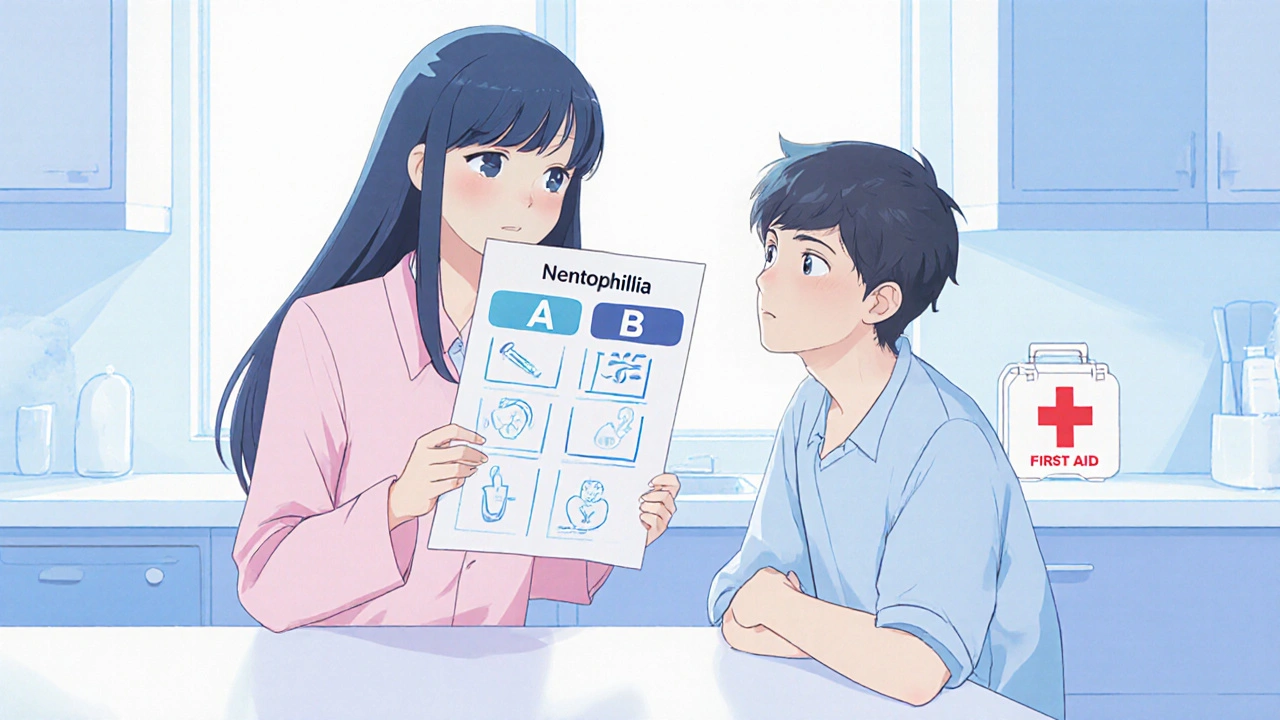Living with Hemophilia: Your Everyday Guide
When navigating Hemophilia, a genetic bleeding disorder where blood doesn’t clot properly. Also known as Bleeding disorder, it affects clotting factor levels and forces people to think differently about injuries, activity, and health care.
One of the first things to master is Factor replacement therapy, the administration of clotting factor concentrates to stop or prevent bleeds. This treatment directly reduces the frequency of bleeding episodes, allowing more freedom in daily life. Knowing the right dosage, timing, and how to store the product are core skills that turn a potentially dangerous condition into a manageable routine.
Beyond clotting factors, Joint health, the condition of knees, elbows and ankles after repeated bleeds becomes a vital focus. Early physiotherapy, regular range‑of‑motion exercises, and prompt bleed treatment keep joints from deteriorating into chronic arthropathy. When joint pain starts, a quick factor infusion often makes the difference between a short‑term setback and long‑term damage.
Key Areas to Master
Understanding Genetic counseling, professional advice about inheritance patterns and family planning for hemophilia helps patients and relatives plan for future pregnancies and identify carriers. Counselors explain the X‑linked inheritance, offer testing options, and discuss reproductive technologies, giving families clearer choices.
Everyday life also means planning for emergencies. Carrying a living with hemophilia emergency kit—factor concentrate, a tourniquet, and a medical alert card—ensures rapid response when a bleed occurs outside the home. Knowing how to self‑administer factor, recognize early bleed signs, and communicate with medical staff creates a safety net that many patients rely on.
Physical activity isn’t off‑limits; it just requires smart choices. Low‑impact sports like swimming, cycling, or rowing often pose less risk of joint injury while still delivering cardiovascular benefits. When high‑impact activities are desired, wearing protective gear and discussing prophylactic factor dosing with a hematologist can keep risk at a tolerable level.
Nutrition plays a subtle yet supportive role. A balanced diet rich in vitamin C, vitamin K, and protein aids tissue repair and overall health, while staying hydrated helps maintain blood volume, which can influence clotting dynamics. Although no food can replace factor therapy, good nutrition smooths recovery after bleeds.
Psychological wellbeing matters, too. Living with a chronic bleeding disorder can bring anxiety, especially around school, work, or social events. Joining support groups, whether in‑person or online, provides peer insights, shared coping strategies, and a sense of community that combats isolation.
Insurance navigation is another practical pillar. Understanding coverage for factor concentrates, physiotherapy, and genetic testing prevents unexpected out‑of‑pocket costs. Many national hemophilia societies offer resources to help patients appeal denied claims or locate financial assistance.
Finally, staying updated on emerging therapies—such as long‑acting recombinant factors, gene therapy trials, and non‑factor options like emicizumab—ensures patients can discuss cutting‑edge choices with their care team. These advances promise fewer infusions and even potential cures, reshaping the long‑term outlook for many.
All these pieces—factor replacement, joint care, genetics, emergency planning, activity adaptation, nutrition, mental health, insurance, and new treatments—form the puzzle of living with hemophilia. Below you’ll find a curated list of articles that dive deeper into each topic, offering step‑by‑step guides, expert comparisons, and real‑world tips to help you take control of your health.

Hemophilia Caregiver Guide: Practical Tips for Supporting Loved Ones
A practical guide for caregivers of loved ones with hemophilia, covering daily care, emergency handling, treatment options, and emotional support.
